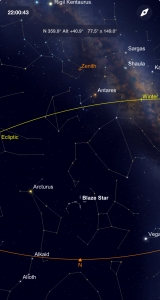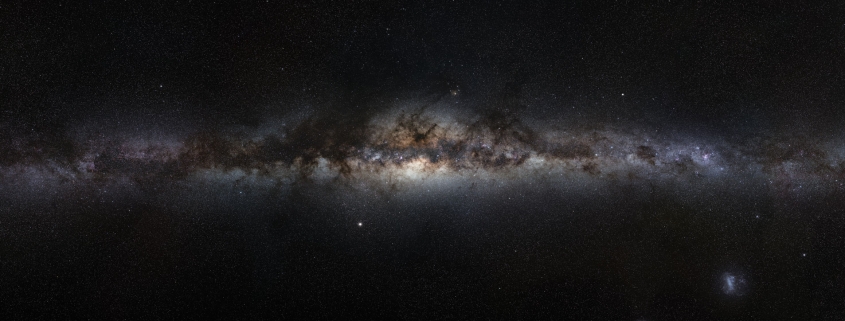What’s in the Sky in June
June
At this time of the year, as Winter embraces the Southern Hemisphere, the middle of our Milky Way galaxy in the constellation of Sagittarius, is rising in the East.
- All month Two stars to watch when you have time:
![]()
Blaze Star to go nova soon! Here’s how to see it and anyone could be the first to see it!
Astronomers are keeping a close watch on T Coronae Borealis, which also has the nickname Blaze Star, and is 3,000 light-years away from Earth. It’s a recurring nova with outbursts about every 80 years. its first observed outburst was on the night of May 12 1866. The star was about the same magnitude as alpha , magnitude 2.2, the maximum of 2.0 was reached the same night and then it faded rapidly falling below naked eye visability within 8 days. Its last outburst was on February 9th 1946 it reached magnitude of 3.0 and soon subsided as beforehand and astronomers believe another will occur sometime between now and September 2024.
The star system, normally magnitude +10, is far too dim to see with the unaided eye. After the nova occurs, it will jump to around magnitude +2.
Once its brightness peaks, it should be visible to the unaided eye for several days and just over a week with binoculars before it dims again, likely for another 80 years.

- 2nd Lunar Perigee, closest approach of the Moon for the month 17:19hr AEST, Dist. 368,102.5km.
- 11th Earliest sunset of the year.
- 15th Mercury at superior conjunction, it is on the opposite side of the Sun to the Earth.
- 15th Moon at Apogee, furthest from the Earth this month at 404,078.8 at 23:35hrs AEST.
- 14th Saturn rising late at night, 23.51hrs AEST, in the constellation of Aquarius and is East of Formalhaut, a double star Mag +1.23 and +24.60 giving an overall magnitude as one star of +1.16 in the constellation Piscis Austrinus, the Southern fish. Neptune is just East of Saturn. Saturn is moving towards, opposition in September, and getting brighter and closer.
- 18th Jupiter is rising in the early hours of the morning at 03:38hrs AEST at a distance of 831.0 million km, 46.20 light minutes.
- 19th The Moon is lowest in the sky on this day, at 28 degrees North of the Equator.
- 21st The North Solstice, the time when the Sun is at it’s furthest point North, occurs at 06:51hrs AEST. This is the shortest day of the year.
- 27th Second Lunar Perigee this month not quote as close as on 2nd June. 21:31hr AEST, Dist. 369,288.8km.
- 29th This day is the latest sunrise of the year.


![IMG_E1034[1]](https://ballaratobservatory.org.au/wp-content/uploads/2024/08/IMG_E10341-180x180.jpg)
![IMG_E6324[1]](https://ballaratobservatory.org.au/wp-content/uploads/2021/01/IMG_E63241-180x180.jpg)
![IMG_E0597[1]](https://ballaratobservatory.org.au/wp-content/uploads/2024/05/IMG_E05971-180x180.jpg)
![IMG_E1212[1]](https://ballaratobservatory.org.au/wp-content/uploads/2023/12/IMG_E12121-1-180x180.jpg)

